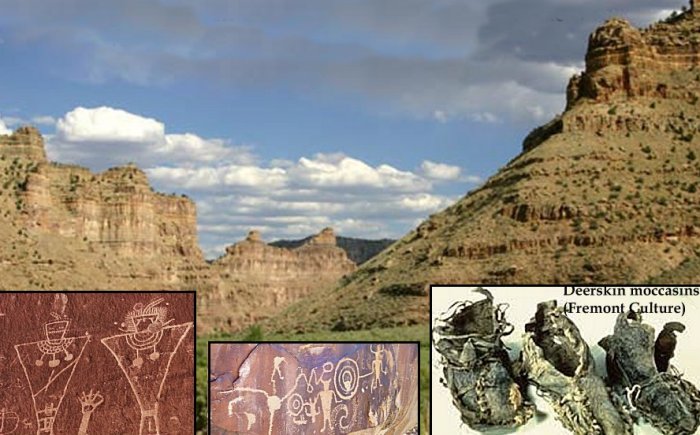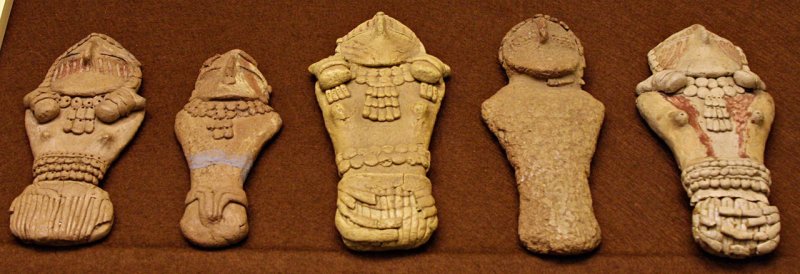Fremont Indians: Unique 2,500-Year-Old Forgotten Culture Of North America
A. Sutherland - AncientPages.com - About 2,500 years ago, a unique culture of Fremont Indians began to develop in Utah and parts of Nevada, Idaho, and Colorado.
The culture received its name from the Fremont River Valley, Utah, where these people lived and reached as far as Cedar City.
Their culture was first defined in 1931 by a young Harvard anthropology student, Noel Morss, who worked along the Fremont River in south-central Utah
Social Structure, Diet, And Challenging Life
The Fremont Indians often lived in rugged places but knew how to adapt to the environment. They were closely tied to nature and its changes, so they had to be flexible and adaptive to modify their way of life quickly.
Their social structure was probably composed of small, loosely organized bands or larger villages consisting of several families living in natural rock shelters and pit houses dug into the ground and covered with a brush roof.
They hunted with a bow and arrow and gathered and grew corn and beans. They also ate native plants such as pinyon nuts, rice grass, berries, bulbs, and tubers.
Artifacts That Distinguished The Fremont Indians From Others
Unlike the fiber sandals used by the Anasazi, the Fremont made moccasins from the lower-leg hide of large animals, such as deer, bighorn sheep, or bison.
Pilling Figurines, unfired clay Fremont figurines, on display in the College of Eastern Utah Prehistoric Museum. Image credit: Brian Lee (Markarian421) - CC BY-SA 3.0
Also, their basketry, the so-called "one-rod-and-bundle," was unique because the Fremont people used milkweed, willow, yucca, and other native fibers to make baskets.
Their tools, such as grinding stones, arrow points, and many others of this kind, were similar to those used by other tribes. Their pottery, however, was mostly gray wares with polished and very smooth surfaces or designs pinched into the clay.
Fremont pictographs and petroglyphs are famous. They depict trapezoidal figures with arms, legs, and fingers and are decorated with headdresses and necklaces; there are also animal-like figures such as deer, dogs, bighorn sheep, birds, snakes, and lizards.
About 1250 AD, artifacts of this unique culture began to disappear from the region. Among them are "one-rod-and-bundle basketry," thin-walled gray pottery, and curious small clay people figurines decorated with necklaces, ear bobs, clothing, hair, facial decorations, and anatomical decorations characteristics.
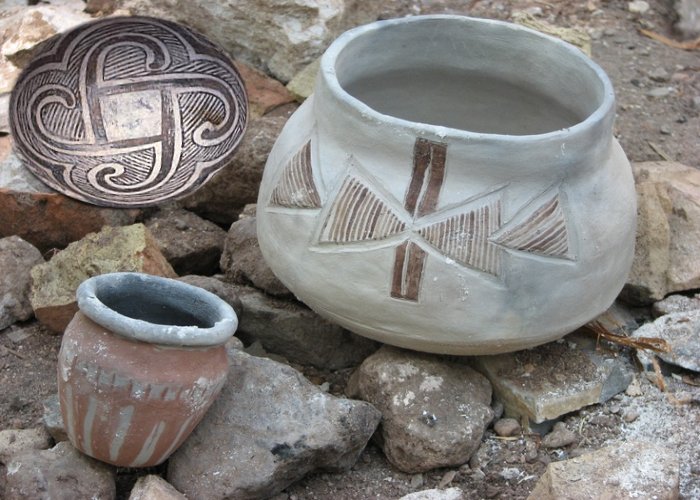 Fremont Indian's pottery State Park and Museum, Utah
Fremont Indian's pottery State Park and Museum, Utah
The purpose of the figurines is still unknown, but the researchers suggested the artifacts may be associated with fertility or the Fremont people's religious rituals.
Later, the Fremont Culture and its artifacts began to decline about 1150 AD and ceased to exist by AD 1300. New people moved into Fremont territory, but what happened to the Fremont Indians is not entirely explained.
Was climate change responsible? Or were they killed or forced to leave their homes and find another place to live?
Written by – A. Sutherland AncientPages.com Staff Writer
Updated on July 20, 2022
Copyright © AncientPages.com All rights reserved. This material may not be published, broadcast, rewritten or redistributed in whole or part without the express written permission of AncientPages.com
Expand for referencesMore From Ancient Pages
-
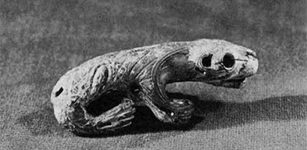 Ancient City Of Ipiutak Was Built By A Fair-Haired Race With Blue Eyes And Not Us – The Inuit Say
Featured Stories | Apr 23, 2019
Ancient City Of Ipiutak Was Built By A Fair-Haired Race With Blue Eyes And Not Us – The Inuit Say
Featured Stories | Apr 23, 2019 -
 Terrifying Buggane: Demonic And Tyrannical Celtic Demon That Hated Churches And Set Them On Fire
Celtic Mythology | Jul 14, 2017
Terrifying Buggane: Demonic And Tyrannical Celtic Demon That Hated Churches And Set Them On Fire
Celtic Mythology | Jul 14, 2017 -
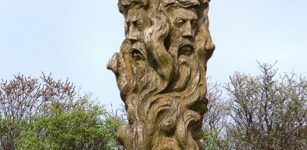 Svantevit – Four-Headed War God Of The Slavic Peoples Of Central Europe
Featured Stories | Sep 13, 2015
Svantevit – Four-Headed War God Of The Slavic Peoples Of Central Europe
Featured Stories | Sep 13, 2015 -
 Mysterious Otherworldly Creatures Witnessed By Biblical Prophet – What Happened?
Biblical Mysteries | Jun 30, 2020
Mysterious Otherworldly Creatures Witnessed By Biblical Prophet – What Happened?
Biblical Mysteries | Jun 30, 2020 -
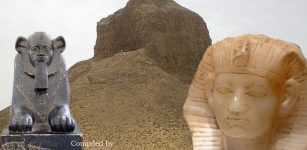 The Black Pyramid Of Amenemhat III – Mysterious Underground Chambers And Lost Ancient Treasures
Featured Stories | Aug 9, 2021
The Black Pyramid Of Amenemhat III – Mysterious Underground Chambers And Lost Ancient Treasures
Featured Stories | Aug 9, 2021 -
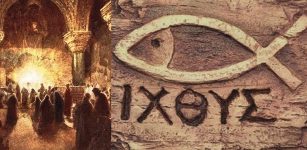 Mysterious Ichthys – Ancient Secret Christian Symbol With A Deep Meaning
Ancient Symbols | Mar 6, 2018
Mysterious Ichthys – Ancient Secret Christian Symbol With A Deep Meaning
Ancient Symbols | Mar 6, 2018 -
 On This Day In History: Declaration Of Independence Of The Mexican Empire Is Drafted – On Sep 28, 1821
News | Sep 28, 2016
On This Day In History: Declaration Of Independence Of The Mexican Empire Is Drafted – On Sep 28, 1821
News | Sep 28, 2016 -
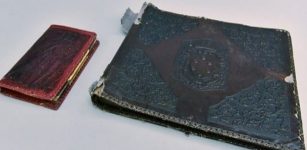 Nazi Photo Album Made Of Human Skin Found At Polish Antiques Market
History | Mar 18, 2020
Nazi Photo Album Made Of Human Skin Found At Polish Antiques Market
History | Mar 18, 2020 -
 Medieval Celtic Mystery Written In Konungs Skuggsja – The King’s Mirror
Featured Stories | Sep 13, 2018
Medieval Celtic Mystery Written In Konungs Skuggsja – The King’s Mirror
Featured Stories | Sep 13, 2018 -
 The Green Knight – New Movie Based On Arthurian Legend
Myths & Legends | Aug 7, 2021
The Green Knight – New Movie Based On Arthurian Legend
Myths & Legends | Aug 7, 2021 -
 Mysterious Ancient Giant Jars Made By An Unknown Civilization Discovered In India
Archaeology | Mar 30, 2022
Mysterious Ancient Giant Jars Made By An Unknown Civilization Discovered In India
Archaeology | Mar 30, 2022 -
 On This Day In History: Eminent Scottish Inventor Graham Bell Born – On Mar 3, 1847
News | Mar 3, 2017
On This Day In History: Eminent Scottish Inventor Graham Bell Born – On Mar 3, 1847
News | Mar 3, 2017 -
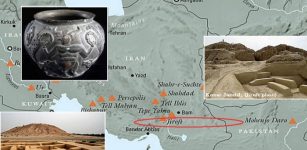 Jiroft’s Konar Sandal – Home To A Huge Ziggurat And Many Ancient Treasures
Featured Stories | Jun 8, 2021
Jiroft’s Konar Sandal – Home To A Huge Ziggurat And Many Ancient Treasures
Featured Stories | Jun 8, 2021 -
 A Bronze Age Food Vessel Unearthed During A High Street Demolition 42 Years Ago Has Gone On Display At A Nearby Museum
Archaeology | Sep 13, 2022
A Bronze Age Food Vessel Unearthed During A High Street Demolition 42 Years Ago Has Gone On Display At A Nearby Museum
Archaeology | Sep 13, 2022 -
 Secrets Of The Assyrian Dream Book And Dream Interpretation In The Ancient Near East
Featured Stories | Aug 6, 2021
Secrets Of The Assyrian Dream Book And Dream Interpretation In The Ancient Near East
Featured Stories | Aug 6, 2021 -
 Return Of Pahana – The Lost White Brother Of The Hopi And The Sacred Tablet
Myths & Legends | Mar 5, 2018
Return Of Pahana – The Lost White Brother Of The Hopi And The Sacred Tablet
Myths & Legends | Mar 5, 2018 -
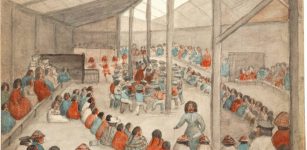 Potlatch: Ancient North American Indian Tradition Of Very Generous Gift Giving
Ancient Traditions And Customs | Sep 12, 2016
Potlatch: Ancient North American Indian Tradition Of Very Generous Gift Giving
Ancient Traditions And Customs | Sep 12, 2016 -
 On This Day In History: Henry IV Is Crowned King Of France – On Feb 27, 1595
News | Feb 27, 2017
On This Day In History: Henry IV Is Crowned King Of France – On Feb 27, 1595
News | Feb 27, 2017 -
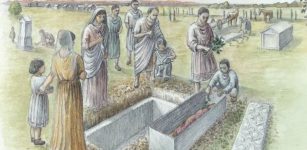 Who Was The Mysterious Spitalfields Roman Noblewoman Dressed In Silk Found In A Sarcophagus In London?
Archaeology | Dec 21, 2020
Who Was The Mysterious Spitalfields Roman Noblewoman Dressed In Silk Found In A Sarcophagus In London?
Archaeology | Dec 21, 2020 -
 Ancient Intercontinental Underground Tunnels Built By Survivors Of A Great Catastrophe And The Snake God Connection
Featured Stories | Jul 4, 2018
Ancient Intercontinental Underground Tunnels Built By Survivors Of A Great Catastrophe And The Snake God Connection
Featured Stories | Jul 4, 2018

